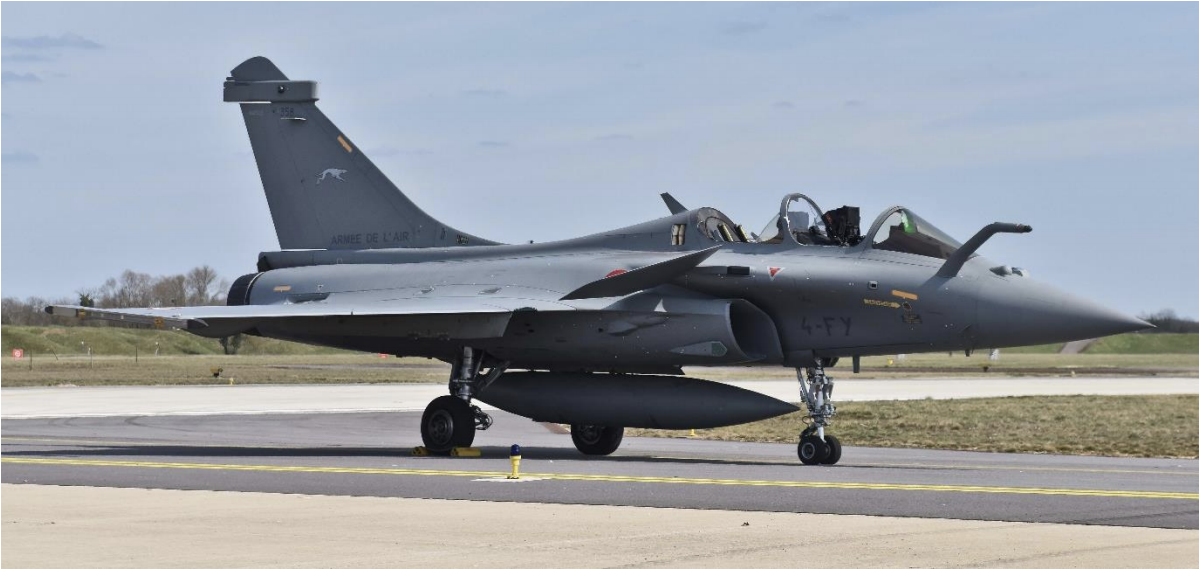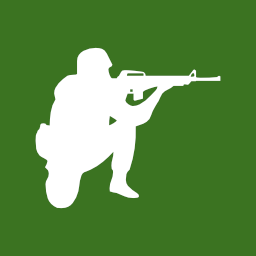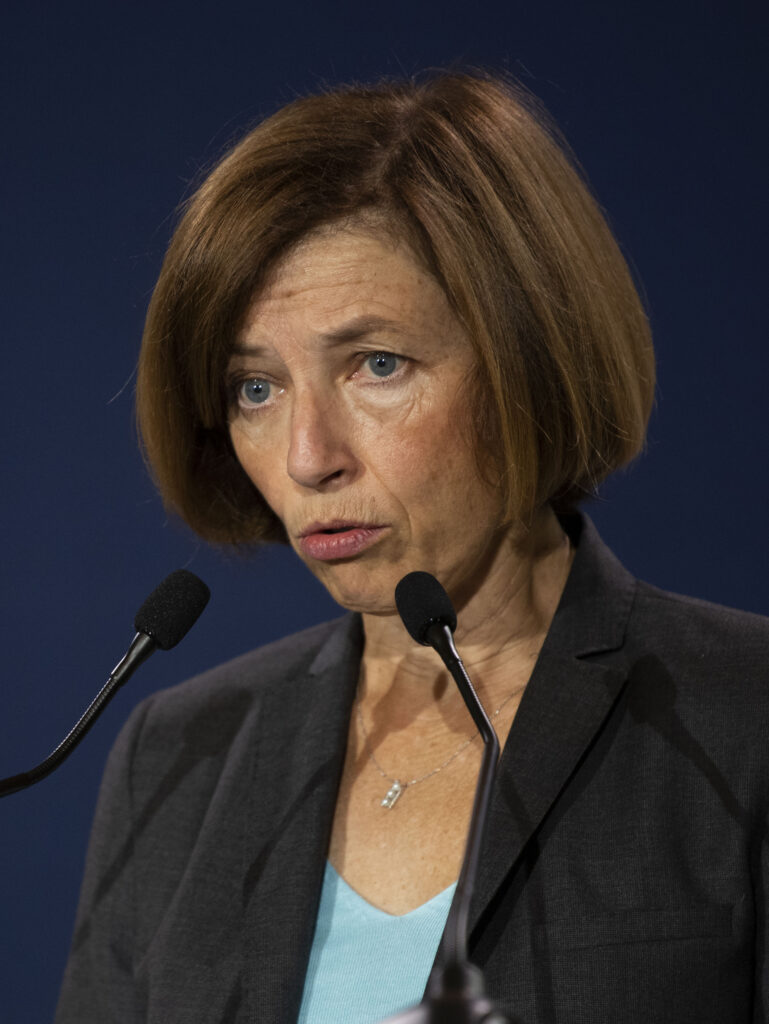Samovarius
Ylipäällikkö
Sehän on makuasia, että minkä verran sotarautaa kuuluu sellainen funktionaalinen rosoisuus ja milloin liikutaan sosialistisessa realismissa.
Follow along with the video below to see how to install our site as a web app on your home screen.
Note: This feature may not be available in some browsers.

This is hilarious! Imagine the look on the faces of the coworkers when they saw their buddy, whom they pressured into the flight, punch out right after rotation! “Well I guess he really didn’t want to go flying today!”
Rafale Ride Leads To Inadvertent Ejection By Overstressed Passenger
Steve Trimble April 09, 2020
A well-meaning gesture gone wrong exposed a previously undetected flaw in the Rafale's ejection system.
Credit: French Military
A ride in a French Air Force Rafale B didn’t go as planned when an overstressed back-seat passenger inadvertently ejected from the two-seat fighter, and the aircraft was saved only because of a previously undetected flaw that prevented the pilot’s ejection, a new French military report says.
The back-seat passenger on the March 2019 flight from Saint Dizier, France was a 64-year-old contractor responsible for the test activity of a French armaments company, according to the report published April 6 by the French military’s air accident investigation office.
When the passenger arrived in Saint Dizier the evening before the flight, he was unaware that his colleagues had arranged a special, back-seat ride in the French Air Force’s most advanced fighter, the report says.
His colleagues, who included a former French Air Force pilot, wanted to make the flight a surprise, but they didn’t count on the prospective passenger’s reaction.
The passenger “never expressed a desire to carry out this type of flight and, in particular, on Rafale,” according to a translated copy of the French-language report.
Because the gesture was meant as a surprise, the passenger was informed only hours before the flight, leaving little time for him to prepare. The passenger did not feel he could decline the gesture, bowing to the social pressure imposed by his colleagues, the report says.
A required, preflight medical examination resulted in a recommendation by the doctor to limit any maneuver forces to less than 3gs. An office electronic system failure, however, prevented the doctor’s guidance from being relayed to the passenger or the pilot of the Rafale involved in the mishap, the report says.
The hastily-arranged surprise also meant that the passenger had to hitch a ride on whatever flight was already arranged on that day, which was a routine patrol mission by three aircraft. Such missions include a standard climb immediately after takeoff with loads greater than 4.5gs, the report says.
The passenger appeared enthusiastic to the pilot as he climbed into his cockpit, but there were signs that he was overstressed. The passenger’s wristwatch recorded his heart beats per minute. The maximum heart rate for a man of his age is 156 beats per minute, according to the report. His was racing from 136 to 142 as he seated himself.
Perhaps due to the stress, the passenger failed to properly buckle in. The back side of his shoulder strap allowed more motion than necessary, the report says. In addition, he didn’t fasten the right leg of his pressure suit, lower the helmet visor or snap the chin strap of his helmet.
The passenger’s experience in the back seat of the Rafale would be brief.
As the pilot rotated on takeoff, the Rafale rapidly developed aerodynamic loads over 4.5gs. Within about 10 sec. of rotation, the pilot leveled off quickly, causing the loads to invert to negative 0.63gs. The shocked passenger, whose loose shoulder straps may have allowed him to start floating upward, reached for a handle, which happened to be the mechanism that causes his seat to eject.
Because the passenger had failed to lower his visor and fasten his chin strap, the exposure to the 200-kt. air flow outside the aircraft caused his helmet to fly off, the report says. Besides minor injuries to his face, the passenger landed safely by the runway after his parachute opened at around 2,000 ft.
The passenger’s inadvertent ejection command could have been disastrous for the aircraft. The two-seat version of the Rafale allows the pilot to select between two options: “1” allows only a single seat to eject when one handle is pulled, and “2” commands both seats to eject when only one is pulled. The pilot had selected the “2” option for this flight, the report says, meaning the pilot’s seat was also supposed to eject.
The ejection sequence proceeded normally, with the canopy of both seats shattering and the back seat firing. However, the explosive charge connected to the front seat never received a command to fire, the report says. As a result, the pilot remained on board the aircraft, albeit with a missing canopy and back seat. The pilot dumped fuel and returned to Saint Dizier to land, the report says. The aircraft was secured for 24 hr. until the front seat’s explosive charge could be disarmed.

Steve Trimble
Steve covers military aviation, missiles and space for the Aviation Week Network, based in Washington DC.
Comments
8 Comments
Paladin
Thu, 04/09/2020 - 13:23
The incident underscores how dangerous the defense business is.....glad to hear all involved are safe.
myke.predko
Thu, 04/09/2020 - 14:34
Interesting way to find bugs in the aircraft's software...
Talyn
Thu, 04/09/2020 - 17:49
Pretty much a complete failure of the ground crew and pilot to make sure the non-mil passenger was properly secured in the back seat.
jgodston
Thu, 04/09/2020 - 22:26
Incredible! As a pilot that flew for 50+ years, in the US Air Force flying Piper Cub, T-28, T-33, and B-47 aircraft, in the Mass. Air National Guard flying, T-33. F-84, and F86H aircraft, and owning and flying a Cessna 182 aircraft in the civilian sector, I never bailed out of any of the aircraft I flew...but had some exciting experiences.... what a GREAT job the 'front-seat' pilot did... not only survive the event, but to have done to get himself and the aircraft back on the ground safely. I would like to have a brief telephone conversation with the pilot....Please help me do that. My telephone number is (206) 382-3643 here in Seattle, WA.
rudag
Fri, 04/10/2020 - 00:24
Sort of reminds me of some kids book, “Try To Find All The Screw Ups”.
There are just so many.
edmckeogh
Fri, 04/10/2020 - 18:06
Fortunately the long series of incorrectness culminated in the front seat not being ejected. Supervisors on this flying unit should be severely reprimanded from top down for allowing a back seat civilian rider to not have been properly supervised while strapping in and connected and not to have been briefed on exactly what to expect on this flight. Getting the aircraft back on the ground takes no particularly great piloting skill, The engines and controls were working normally. Slowing to approach speed cuts airflow into the cockpit to a minimum. Get head down behind windscreen and land, The motivation is there despite the embarrassment of having to explain it all back in ops. This squadron and possibly all flying units at St Dizier should be prohibited from taking on back seaters unless they are fully qualified to be there and all should be briefed on how to perform their duties properly for others. Incredibly this is a 1950's type screwup in 2020 in a most modern aircraft.
aki
Sat, 04/11/2020 - 06:50
It sounds like what is described as "the front seat never received a command to fire" is a software failure.
Are we to take this as an indication of the reliability level of the Rafale's life critical software? More reporting by AW would be greatly welcome on this topic.
BigE737
Mon, 04/13/2020 - 22:03
This is hilarious! Imagine the look on the faces of the coworkers when they saw their buddy, whom they pressured into the flight, punch out right after rotation! “Well I guess he really didn’t want to go flying today!” How ironic that a malfunction after screw-up prevented a mishap ( i.e. smoking hole in the ground). Apparently three wrongs make right, sorta...


Luulenpa että tulevina vuosina gripu ohittaa kaikki koska kehittäminen on tehty ajanmukaiseksi. Ei tarvi todentaa pikkumuutoksia 14km korkeudessa ja 6g vedossa. Heillä kun on emulaattori. Jopa F-35 taitaa olla softatyön osalta vanhentunut. Eräässä youtubessa tekijä kertoi, luokat omissa tiedostoissaan yms 1990-luvun tapaan. Ei kehitysbudjetti auta jos vanhaa ja pirstaloitunut työ eri firmoille eri maanosissa^Ilmailun alkuvuosikymmeninä hyvin yleinen onnettomuustyyppi oli etenkin laskuissa tapahtuva matkustajan tarttuminen ohjaussauvaan: kaksipaikkaisissa koneissa kun oli jo tuolloin usein tuplaohjaimet, ja henkilölle jolle lentäminen oli uusi juttu ja jännitti kovasti (etenkin laskuissa), edessä oleva sauva oli juuri sellainen mihin tarttua hädissään ja ottaa tukea -> ryskis. Briiffauskin saattoi olla tasoa 'hyppää kyytiin, tämä on upeaa', etenkin innokkailla lentäjäpojilla jotka kalastelivat 'barnstorming' -tapahtumissa paikallisten neitojen suosiota.
Sitten on-topic, Air International-lehden numero 6/19 tarttui kirjastosta mukaan kun siinä oli 24-sivuinen Rafale mainos^H^H^H infoliite ja myös pitkä Gripen E-artikkeli. Rafale-fanin kannattaa lukea vaikkei artikkeli kaikilta osin tietenkään uusinta hottia enää edustakaan ja useimmat asiat on täältäkin jo tuttua huttua, mutta mukava kokonaistietopakkaus kuitenkin:
-Paljon juttua Rafalen nykyisestä tuotantoversiosta F3R:stä. Uusi TALIOS-hyökkäyssäiliö on iso parannus Damoclesiin joka alkoi olla ajastaan jäljessä etenkin IP-sensorin suhteen.
-koska Rafalen tutka voi seurata sekä Meteor-ohjusta että maalia, niin kokeiltu myös kohteen vaihtoa ohjukselle 'lennosta'.
-tukialusosiossa käsitellään Rafalen alkuaikojen huolto-ongelmia F2-standardin aikoihin. Koneen diagnostiikka oli yliherkkä ja antoi paljon vääriä hälytyksiä ja koneita oli paljon turhaan poissa rivistä. Koko systeemi piti koodata uusiksi. Konetta kehutaan erittäin helpoksi huoltaa (duh).
-F4 -standardi jaettu 4.1 ja 4.2 -osiin. Ensinmainittua alkaa tulla Ranskan ilmavoimille vuonna -23
-F4.1:ssä uusi IRST, kypäränäyttö, ohjaamoon isompi korkean resoluution näyttö, elso-parannuksia, uusia tutkamoodeja.
-F4.2 OpEval vuonna 2025. Kaikki uudet valmistuvat Rafalet olisivat tätä standardia: kaikki vanhat koneet on tarkoitus päivittää 4.1:een muttei välttämättä 4.2:een.
-4.2:ssa parannetaan verkostuneisuutta: "Koneeseen asennetaan serveri". FO3D-datalinkki ("3d-waveform") yhdistää sekä VHF-kaistalla Rafalen muuhun sotakoneistoon, ja lisäksi tulee Ku-kaistan suunnattu parvilinkki. Artikkelin kirjoittamisajankohtana tekniset ratkaisut ovat osin auki koska odotellaan Nato-standardisopimusta. Elsoa ja omasuojaa kehitetään edelleen, mielenkiintoinen on silppulaukaisimesta pudotettava 'stand-in häirintämaali' eli jonkunlainen mini-UAV joka manööveröi itsensä Rafalen ja uhan väliin.
-näiden uusien laitteiden sijoittaminen koneeseen ei ole ongelma "koska tilaa ja jäähdytysmahdollisuuksia on rungossa vielä runsaasti"
-koneeseen tulee vakiovarusteeksi "ase- ja navigointilisälaite" eli pieni reisitabletti, johon on helpompi lisätä erilaisia nopealla tahdilla käyttöön otettuja sovelluksia ja ohjelmia kuin itse koneen arkkitehtuuriin.
-Mican uusi versio NG pitäisi olla valmis sopivasti F4:ään. HAMMER-täsmäpommista tulossa 1000kg-versio
-F5 suunnitteilla, palvelukseen 2030 jälkeen. Tähän versioon otetaan täysipainoisesti gallium-nitridi -pohjainen teknologia, koneen tutka saa samanlaiset 'poskiantennit' kuin Su-57:ssa. Koneen aseistukseen lisätään Future Cruise/Anti-ship Weapon (aka. Perseus).
Gripen-artikkelin anti oli köykäisempää mutta ihan mukavaa juttua siinäkin.
Saas nähdä. Rafale on villi kortti jenkkien takana. Paljonko mainospuheissa on perää ja paljonko pimitetään, on toinen asia.Nähtäneenkö Florencen kyynärbumpit myös marraskuun harmaassa Suomessa?
Tämän takia eurooppalaisista vaihtoehdoista mieluiten valitsen Rafalen.Saas nähdä. Rafale on villi kortti jenkkien takana. Paljonko mainospuheissa on perää ja paljonko pimitetään, on toinen asia.
Dassaultin ja kumppanien osalta on kuitenkin todettava että hanke on pysynyt budjetissaan ja toimitukset rullaavat kehitystyön lisäksi. Jos taas verrataan tätä Typhooniin niin eroa on kuin yöllä ja päivällä mitä kehitykseen tulee. Lupauksia, konsepteja, suunnittelua, taakanjakoa ja taas puhetta riittää. Sitten kuitenkin maat tekevät omia ratkaisujaan konsortiossa. Tuntuu että tärkeintä tuossa projektissa on saada jokaiseen maahan pala kakkua ja mieluiten mahdollisimman iso sellainen että kotimaan työllisyys täydentyy.
Ranskan ainoa hävittäjätyyppi on Rafale jonka täytyy toimia, siksi siihen laitetaan hilloa. Päätökset tehdään nopeasti ja suunnitelma on pitkälle tulevaisuuteen ja toisin kuin Eurofighterin suunnitelmiin, Dassaultin projektiin voi luottaa toteutuneiden näyttöjen perusteella.
Tätä listaa lukiessa Rafale vaikuttaa kyllä mikäli F-35 ei käy niin Super Hornetin kanssa vahvalta kakkoselta.^Ilmailun alkuvuosikymmeninä hyvin yleinen onnettomuustyyppi oli etenkin laskuissa tapahtuva matkustajan tarttuminen ohjaussauvaan: kaksipaikkaisissa koneissa kun oli jo tuolloin usein tuplaohjaimet, ja henkilölle jolle lentäminen oli uusi juttu ja jännitti kovasti (etenkin laskuissa), edessä oleva sauva oli juuri sellainen mihin tarttua hädissään ja ottaa tukea -> ryskis. Briiffauskin saattoi olla tasoa 'hyppää kyytiin, tämä on upeaa', etenkin innokkailla lentäjäpojilla jotka kalastelivat 'barnstorming' -tapahtumissa paikallisten neitojen suosiota.
Sitten on-topic, Air International-lehden numero 6/19 tarttui kirjastosta mukaan kun siinä oli 24-sivuinen Rafale mainos^H^H^H infoliite ja myös pitkä Gripen E-artikkeli. Rafale-fanin kannattaa lukea vaikkei artikkeli kaikilta osin tietenkään uusinta hottia enää edustakaan ja useimmat asiat on täältäkin jo tuttua huttua, mutta mukava kokonaistietopakkaus kuitenkin:
-Paljon juttua Rafalen nykyisestä tuotantoversiosta F3R:stä. Uusi TALIOS-hyökkäyssäiliö on iso parannus Damoclesiin joka alkoi olla ajastaan jäljessä etenkin IP-sensorin suhteen.
-koska Rafalen tutka voi seurata sekä Meteor-ohjusta että maalia, niin kokeiltu myös kohteen vaihtoa ohjukselle 'lennosta'.
-tukialusosiossa käsitellään Rafalen alkuaikojen huolto-ongelmia F2-standardin aikoihin. Koneen diagnostiikka oli yliherkkä ja antoi paljon vääriä hälytyksiä ja koneita oli paljon turhaan poissa rivistä. Koko systeemi piti koodata uusiksi. Konetta kehutaan erittäin helpoksi huoltaa (duh).
-F4 -standardi jaettu 4.1 ja 4.2 -osiin. Ensinmainittua alkaa tulla Ranskan ilmavoimille vuonna -23
-F4.1:ssä uusi IRST, kypäränäyttö, ohjaamoon isompi korkean resoluution näyttö, elso-parannuksia, uusia tutkamoodeja.
-F4.2 OpEval vuonna 2025. Kaikki uudet valmistuvat Rafalet olisivat tätä standardia: kaikki vanhat koneet on tarkoitus päivittää 4.1:een muttei välttämättä 4.2:een.
-4.2:ssa parannetaan verkostuneisuutta: "Koneeseen asennetaan serveri". FO3D-datalinkki ("3d-waveform") yhdistää sekä VHF-kaistalla Rafalen muuhun sotakoneistoon, ja lisäksi tulee Ku-kaistan suunnattu parvilinkki. Artikkelin kirjoittamisajankohtana tekniset ratkaisut ovat osin auki koska odotellaan Nato-standardisopimusta. Elsoa ja omasuojaa kehitetään edelleen, mielenkiintoinen on silppulaukaisimesta pudotettava 'stand-in häirintämaali' eli jonkunlainen mini-UAV joka manööveröi itsensä Rafalen ja uhan väliin.
-näiden uusien laitteiden sijoittaminen koneeseen ei ole ongelma "koska tilaa ja jäähdytysmahdollisuuksia on rungossa vielä runsaasti"
-koneeseen tulee vakiovarusteeksi "ase- ja navigointilisälaite" eli pieni reisitabletti, johon on helpompi lisätä erilaisia nopealla tahdilla käyttöön otettuja sovelluksia ja ohjelmia kuin itse koneen arkkitehtuuriin.
-Mican uusi versio NG pitäisi olla valmis sopivasti F4:ään. HAMMER-täsmäpommista tulossa 1000kg-versio
-F5 suunnitteilla, palvelukseen 2030 jälkeen. Tähän versioon otetaan täysipainoisesti gallium-nitridi -pohjainen teknologia, koneen tutka saa samanlaiset 'poskiantennit' kuin Su-57:ssa. Koneen aseistukseen lisätään Future Cruise/Anti-ship Weapon (aka. Perseus).
Gripen-artikkelin anti oli köykäisempää mutta ihan mukavaa juttua siinäkin.

Intiassako ei polittista säätöä... hetkinen.Intiahan on juurikin se kovin referenssi HX-kisassa F-35 -asiakkaat poislukien. Melkein kaikki muut vientiasiakkaat on arabimaita joissa vaa'assa painaa usein joku muu kuin kustannustehokkuus, tai sitten jotain poliittisia säätöjä kuten brassien Gripen tai Itävallan Typhoonit.

Se mikä Intiaanien kaupassa oli mielenkiintoista, oli AAS Hammer-pommperheen vaihto Rafaelin Spiceen. Olen itse pitänyt Hammeria Meteorin ja Mican kanssa Rafalen parhaimpina etuina.
